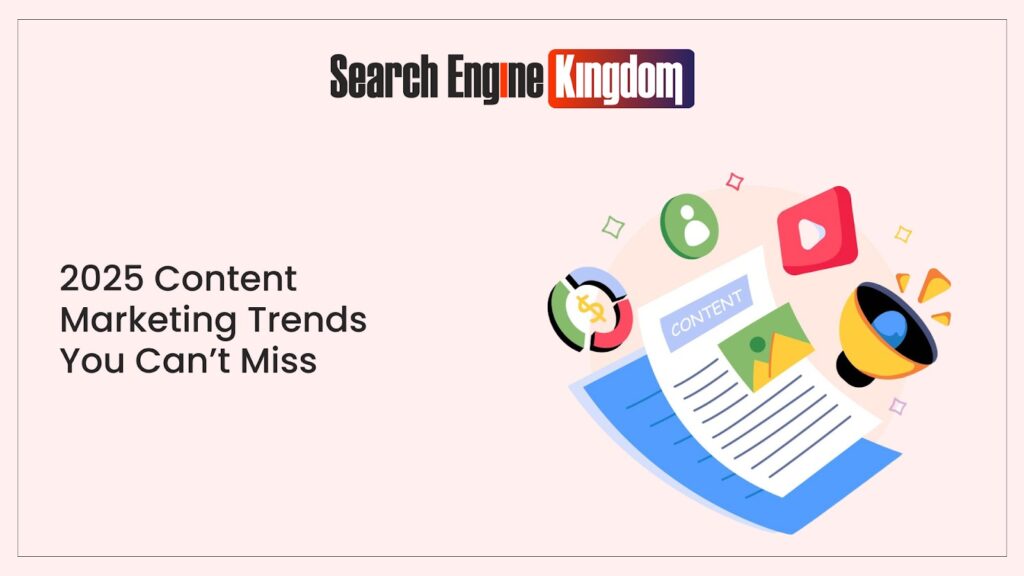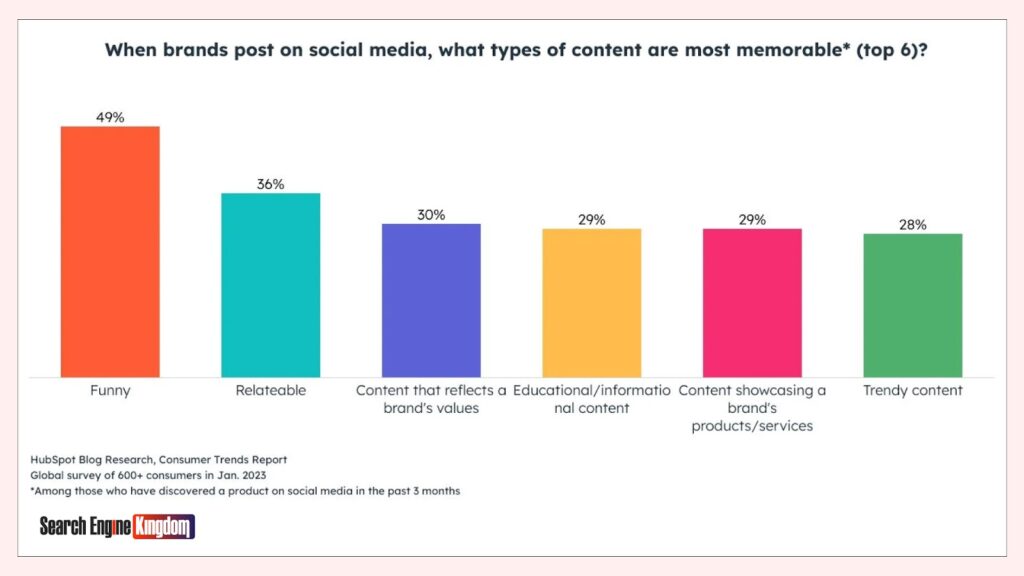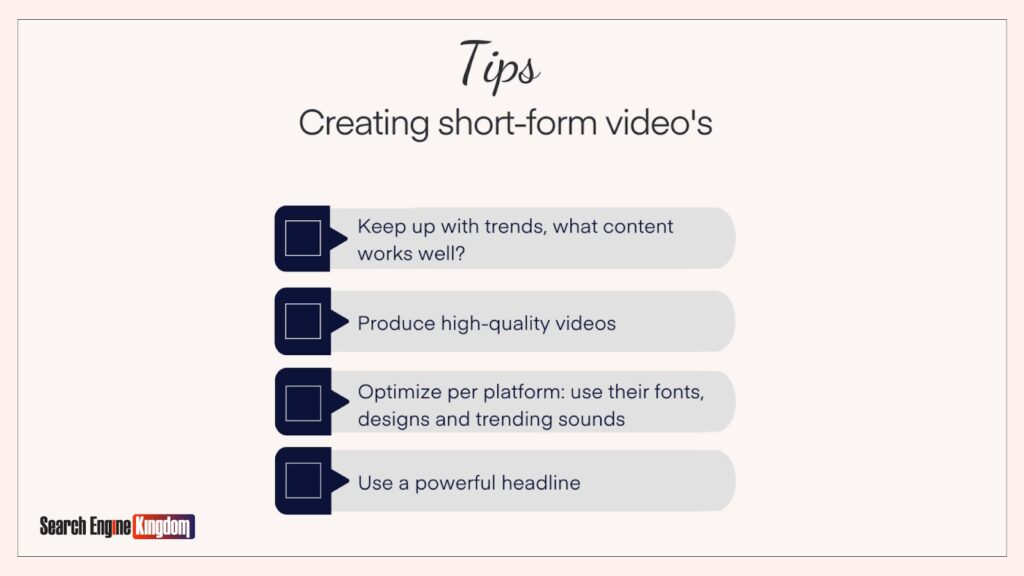
As we move into 2025, content marketing continues to evolve rapidly. With advancements in AI, the growing importance of sustainability, and new ways to connect with audiences, staying on top of trends is essential for success. Here’s a look at the must-know trends in content marketing for 2025, along with actionable tips and examples to help you get ahead.
1. AI as a Creative Partner

In 2025, AI is no longer just a tool for automating tasks—it’s a creative partner. Tools like Jasper.ai and Copy.ai are helping marketers draft content quickly, from blog posts to social media captions. Perplexity, an AI-powered search engine, is taking it a step further by providing quick, AI-generated research summaries to save time.
- Tip: Use AI tools to streamline content creation, starting with research and draft generation, so you can focus on refining the message.
- Example: Use Perplexity to gather insights on sustainability and let Jasper write the first draft of your blog. This saves time and lets you add your brand’s unique voice.
2. Voice and Visual Search

Voice and visual search are changing how consumers interact with content. It’s like Siri and Google Assistant make it easier for people to find what they need with a simple voice command. Similarly, Google Lens and Pinterest’s visual search allow users to shop or find products by simply snapping a photo.
- Tip: Optimize your content for voice search by including conversational keywords, and use high-quality images that can be tagged for visual search.
- Example: Starbucks optimizes its locations for voice queries like “Where’s the nearest Starbucks with a drive-thru?” Pinterest allows users to shop directly by tagging products in photos.
3. First-Party Data for Personalization
As privacy concerns increase and third-party cookies phase out, first-party data is becoming a marketer’s secret weapon. This data, collected directly from your audience, allows for more personalized marketing strategies, enhancing customer engagement and driving conversions.
- Tip: Use first-party data (such as email signups or purchase history) to personalize your campaigns and tailor content to individual users.
- Example: Amazon uses first-party data to recommend products based on browsing history. You can do the same by using tools like HubSpot to create targeted email campaigns.
4. User-Generated Content (UGC) Builds Trust
UGC continues to be one of the most effective ways to build trust with your audience. People are more likely to trust content created by other users, such as reviews, testimonials, and social media posts, than traditional advertisements.
- Tip: Encourage customers to share their experiences and showcase their content across your platforms to build credibility and authenticity.
- Example: GoPro encourages customers to post action shots with their cameras. Similarly, Airbnb features guest-submitted photos and stories to highlight real experiences.
5. Social Platforms as Shopping Hubs

Social platforms have evolved beyond just engagement—they’ve become powerful shopping hubs. Instagram, TikTok, and Pinterest now offer seamless shopping features that allow users to browse and purchase products directly within the app, making social commerce easier than ever.
- Tip: Leverage in-app shopping features on platforms like Instagram Shops and TikTok’s shopping tools to drive sales directly through social media.
- Example: The #TikTokMadeMeBuyIt trend shows how products can go viral and lead to direct sales through TikTok. Instagram Shops also allows users to purchase items without leaving the app.
6. Micro-Influencers Deliver High Engagement
While mega-influencers still grab attention, micro-influencers are driving better engagement rates. These influencers, typically with 10,000 to 50,000 followers, often have highly engaged audiences that trust their opinions and recommendations.
- Tip: Partner with micro-influencers in your niche to create authentic, engaging content that resonates with a more targeted, loyal audience.
- Example: A small skincare brand might partner with a micro-influencer who reviews clean beauty products, leading to better engagement and conversions compared to working with a celebrity influencer.
7. Short-Form Videos Rule

Short-form video content is dominating in 2025. With platforms like TikTok, Instagram Reels, and YouTube Shorts, brands are using short videos to capture attention quickly and engage with their audience in creative ways.
- Tip: Create entertaining and educational short-form videos to capture attention and drive engagement on platforms that prioritize video content.
- Example: Duolingo has gained millions of views on TikTok with short, quirky videos featuring its owl mascot. These videos entertain while promoting the language-learning app.
8. Values and Sustainability Matter
Consumers in 2025 are more conscious than ever about the values of the brands they support. Sustainability, social responsibility, and ethical practices are key factors in their purchasing decisions, and brands that align with these values will build long-term loyalty.
- Tip: Integrate sustainability and social responsibility into your brand’s messaging, and show your commitment through transparency and action.
- Example: Patagonia has built a loyal following by focusing on sustainability and environmental responsibility, from using eco-friendly materials to supporting conservation causes.
9. Lean Teams & Strategic Partnerships
In 2025, businesses are shifting toward learner, more agile teams. Instead of hiring large in-house marketing departments, brands are relying on smaller core teams supported by freelancers and specialized agencies. This allows them to scale efficiently while staying focused on core objectives.
- Tip: Build a lean marketing team and form strategic partnerships with freelancers or agencies for specialized tasks to scale without overextending resources.
- Example: A small ecommerce brand may employ a few full-time marketers but partner with a freelance designer and an agency for paid ads. This approach allows the brand to stay flexible and responsive to market needs.
Conclusion
Content marketing in 2025 is evolving fast, with AI, short-form videos, and social commerce shaping the industry. Staying ahead of content marketing trends means embracing innovation, prioritizing personalization, and building authentic connections. Brands that adapt will thrive in the competitive digital landscape.
For more insights, visit Search Engine Kingdom.
